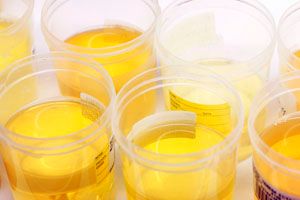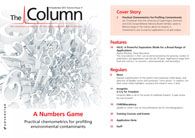Pilot Study Demonstrates Detection of Bladder Cancer with Prototype "Scent Device"
The first pilot study demonstrating the application of a prototype "scent device" (commercially known as "OdoReader") to detect bladder cancer has been published in the journal PLOS ONE.1

The first pilot study demonstrating the application of a prototype "scent device" (commercially known as "OdoReader") to detect bladder cancer has been published in the journal PLOS ONE.1 Developed by Chris Probert of the University of Liverpool (Liverpool, UK) and Norman Ratcliffe of the University of the West of England (Bristol, UK), the device contains a novel in-house fabricated volatile organic compound (VOC) sensor that detects the profile of VOCs. The team behind the project initially received a Wellcome Trust £1.3 million Translation Award in 2010 to develop the prototypes for testing against industry gold standards.
Numerous biomarkers of bladder cancer have been published, but for reasons of sensitivity and reliability, these have not been adopted in a clinical setting. The gold standard detection method remains cystoscopies -uncomfortable, invasive, and costly. The current cost to the National Health Service (UK) of screening patients who do not test positive for bladder cancer is approximately £33.5 million a year, according to the paper.1
Chris Probert told The Column: “My laboratory is interested in the use of VOCs for diagnosing a range of diseases. We have been looking at gastrointestinal disease for several years and made great headway.” He added: “As the cancer sits next to the urine, looking for a biomarker in urine was a logical way to apply our technology. Bladder cancer is very common so we felt this would be clinically useful, not just a scientific curiosity.”
The team collected urine samples from 98 male patients aged between 27 and 91 years, testing the device on 24 patient samples known to have bladder cancer, and on 74 control samples. The control patients had other urological symptoms.
Headspace air was taken from urine samples and then injected into a gas chromatograph coupled to the sensor detection system. This system consisted of a gas chromatography (GC) oven, fitted with a capillary column interfaced to a heated metal oxide sensor that acted as a detector (see reference 1 for full details).
Volatile compounds were passed through the column, where they adsorbed and reacted to the heated metal oxide surface of the detector. The reaction of each compound resulted in a reversible change in electrical charge. Sample specific chromatograms were generated of change in electrical resistance versus time. Sensor outputs were then compared between patient and control samples using statistical interpretation.
The VOC profiles generated were shown to differ between diagnosed patients and controls. The device was able to correctly classify 24/24 bladder cancer samples and 70/74 control samples.
Probert told The Column: “The results are a proof of concept that the odour of urine, as detected by a device, may be used to distinguish urine samples from patients with cancer, from those without.” He added: “This will mean that, in the future, a device such as ours might be used to diagnose bladder cancer, and also to follow-up patients who have been treated to look for recurrence.”
The results are promising, but further work is required to expand the sample size and provide robust statistics. However, when other advancements in GC technology resulting in miniaturization are considered, this technology could be making its way into the clinical setting in the not too distant future. - B.D.
Reference
T. Khalid, P. White, B.D.L. Costello, R. Persad, R. Ewen, E. Johnson, C. Probert, and N. Ratcliffe, PLOS ONE8(7), e6902.
This story originally appeared in The Column. Click here to view that issue.

New Study Reviews Chromatography Methods for Flavonoid Analysis
April 21st 2025Flavonoids are widely used metabolites that carry out various functions in different industries, such as food and cosmetics. Detecting, separating, and quantifying them in fruit species can be a complicated process.
Quantifying Terpenes in Hydrodistilled Cannabis sativa Essential Oil with GC-MS
April 21st 2025A recent study conducted at the University of Georgia, (Athens, Georgia) presented a validated method for quantifying 18 terpenes in Cannabis sativa essential oil, extracted via hydrodistillation. The method, utilizing gas chromatography–mass spectrometry (GC–MS) with selected ion monitoring (SIM), includes using internal standards (n-tridecane and octadecane) for accurate analysis, with key validation parameters—such as specificity, accuracy, precision, and detection limits—thoroughly assessed. LCGC International spoke to Noelle Joy of the University of Georgia, corresponding author of this paper discussing the method, about its creation and benefits it offers the analytical community.












